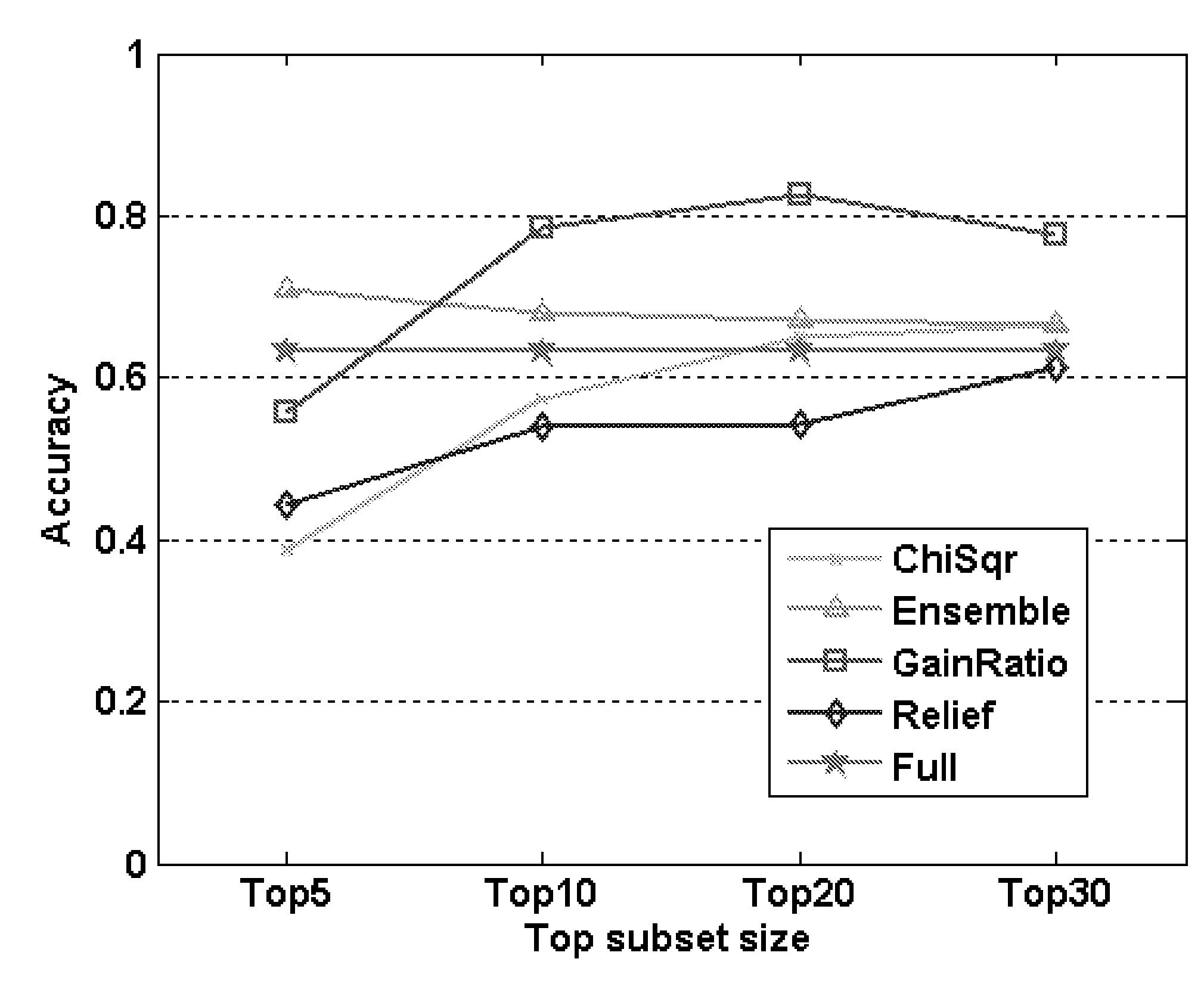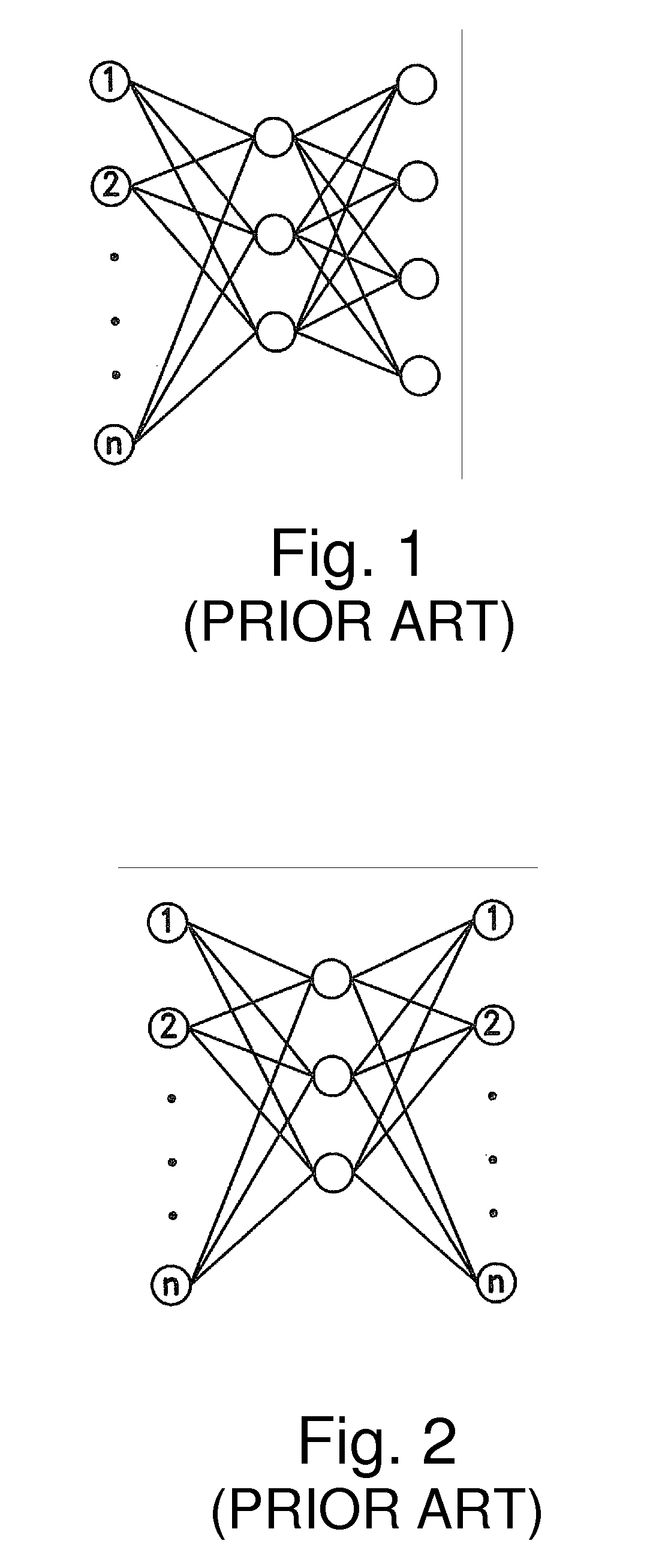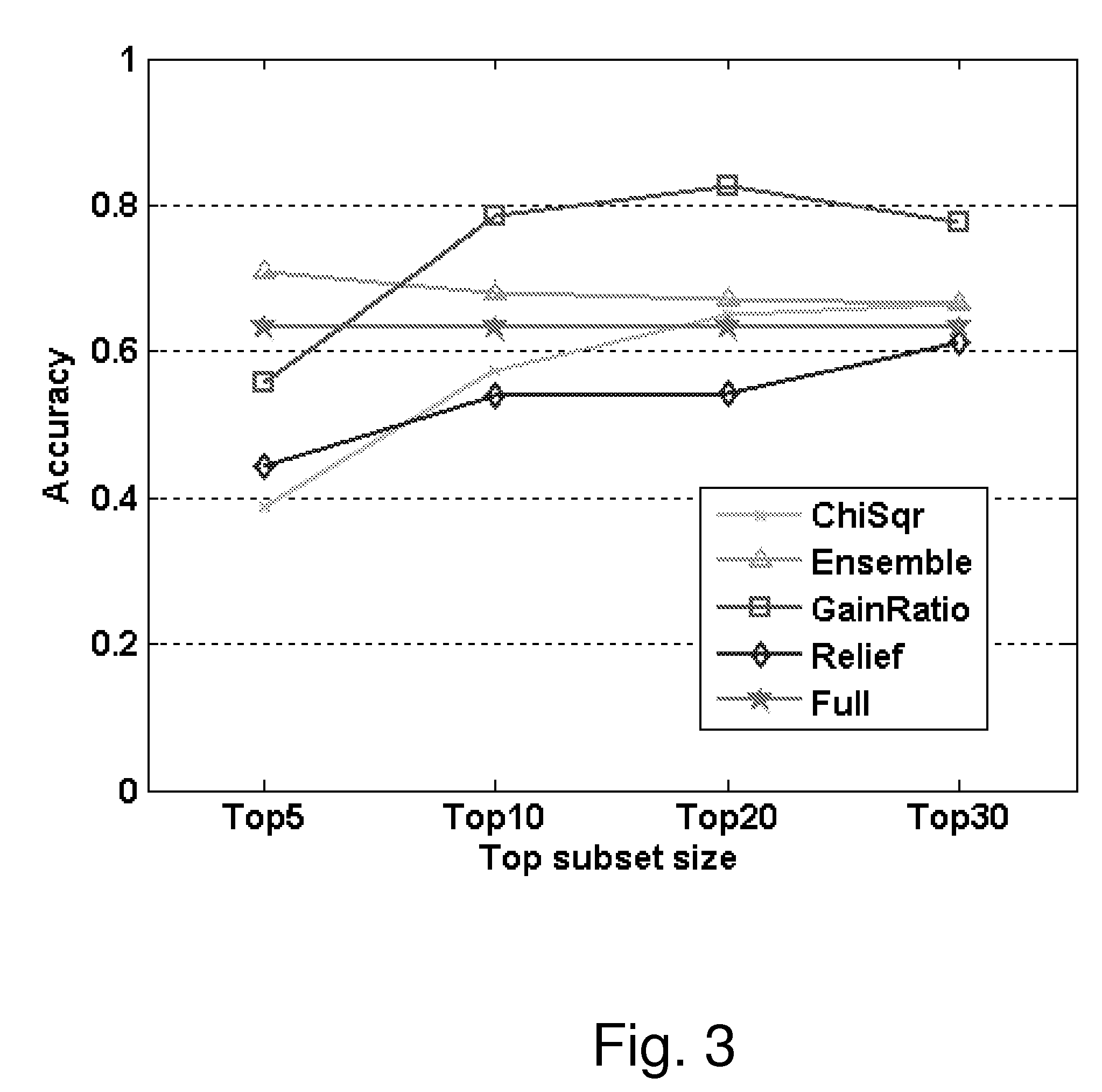Method and system for detecting malicious behavioral patterns in a computer, using machine learning
a machine learning and behavioral pattern technology, applied in the field of computer protection, can solve the problems of computer worms, loss and/or unauthorized utilization and/or modification of large amounts of data, and the increase of the number of attacks on computer networks, so as to reduce the number of input parameters
- Summary
- Abstract
- Description
- Claims
- Application Information
AI Technical Summary
Problems solved by technology
Method used
Image
Examples
example 1
[0071]The method of the present invention was tested in worm detection on a personal computer connected to a simulated internet system and comprising a Microsoft Windows® XP operating system.
[0072]In order to train the ANN, the Levenberg-Marquardt method, which is considered to be one of the preferable algorithms for training ANNs, was used. The Levenberg-Marquardt (LM) algorithm used is the one available as part of the MATLAB® Neural Network Tool-box. The LM method uses second-order derivatives, and therefore may require high computation resources. However, since the training process is performed off-line, the modern high-speed PC computing power was sufficient for this purpose. Once trained, the ANN processing capabilities are very fast and are suitable for real-time computer threat detection.
[0073]The following worms were used to “attack” the PC being analyzed:
[0074]1. W32.Deborm.Y (DebormY)
[0075]This worm scans the local network and tries to propagate along its data channels. It...
example 2
[0187]In this example, the following four classification algorithms were implemented:
[0188]Decision trees: J48, the Weka version of the commonly used C4.5 algorithm [Quinlan J. R., 1993, C4.5: programs for machine learning, Morgan Kaufman Publishers Inc., San Francisco, Calif., USA]. Various studies in the past have shown that it is an efficient algorithm that learns accurate classifiers in many domains.
[0189]Naïve Bayes: The Naive Bayes, the standard version that comes with Weka.
[0190]Bayesian networks: The Bayesian Network standard version which comes with WEKA.
[0191]Artificial Neural Networks: All of the ANN manipulations were performed within a MATLAB® environment using the Neural Network Toolbox (see Demuth H. and Beale, 1998, M. Neural Network Toolbox for use with Matlab, The Mathworks Inc., Natick, Mass., USA)
[0192]The method of the present invention was tested in worm detection by monitoring system calls, as well as computer measurements extracted from the windows performanc...
PUM
 Login to View More
Login to View More Abstract
Description
Claims
Application Information
 Login to View More
Login to View More - R&D
- Intellectual Property
- Life Sciences
- Materials
- Tech Scout
- Unparalleled Data Quality
- Higher Quality Content
- 60% Fewer Hallucinations
Browse by: Latest US Patents, China's latest patents, Technical Efficacy Thesaurus, Application Domain, Technology Topic, Popular Technical Reports.
© 2025 PatSnap. All rights reserved.Legal|Privacy policy|Modern Slavery Act Transparency Statement|Sitemap|About US| Contact US: help@patsnap.com



